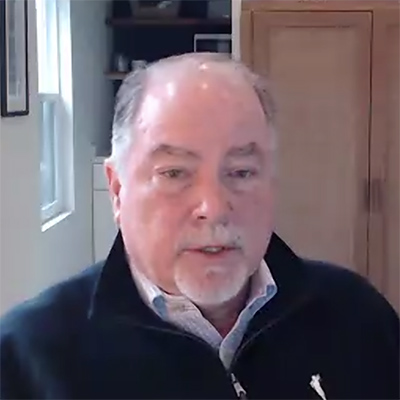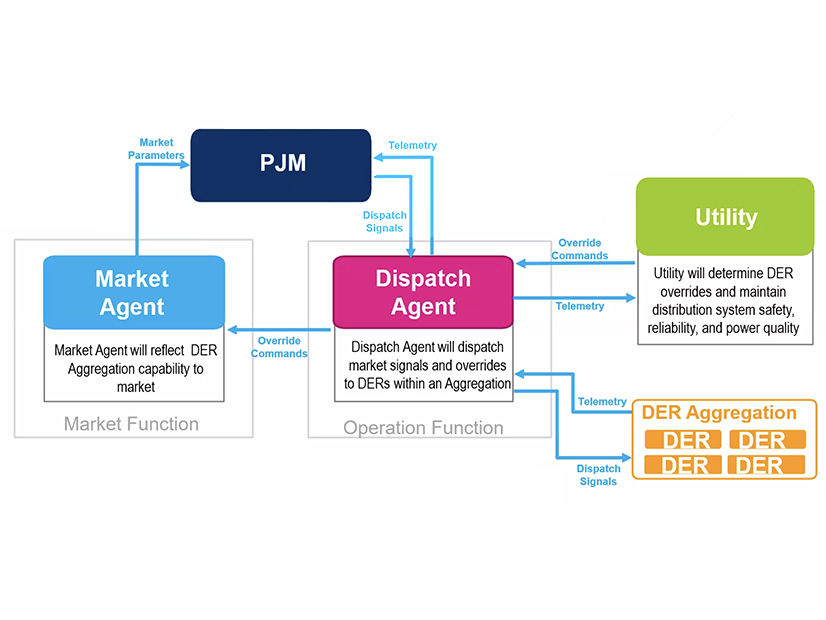Coordinating grid operations with distributed energy resource aggregations as directed in FERC Order 2222 demands a bottom-up approach in order to avoid wholesale market inefficiencies, a panel of experts said on Thursday.
The U.S. Department of Energy last week hosted a meeting of its Electric Advisory Committee, with back-to-back sessions focused on transmission and distribution coordination and operational coordination.
 Paul De Martini, Newport Consulting | DOE
Paul De Martini, Newport Consulting | DOE“Ultimately, if the idea is to do value stacking — as the industry has been discussing for many years, trying to use distributed resources to provide a range of services — then you really need to contemplate what the implication is for each service at each tier, in between each tier and what that’s going to look like,” said Paul De Martini, managing partner of Newport Consulting.
“For each service there’s a different set of actors, a different set of devices operating in a different set of operating mechanisms, whether autonomous or direct physical control, and perhaps a price-based formation that’s potentially influencing that same device, so how do we think about those combinations? How do we think about those architectural issues?”
Integrating DERs into decarbonization modeling involves integrating “market layers,” from local to retail to wholesale, said Lynne Kiesling, research professor at the University of Colorado Denver.
One thing that connects the layers is co-optimization models, she said.
 Robert Cummings, Red Yucca Power Consulting | DOE
Robert Cummings, Red Yucca Power Consulting | DOE“We do a lot of top-down optimal power flow modeling, and perhaps if we think more in terms of co-optimization, that might be a framework for incorporating the perspectives and opportunity cost to the customer and their devices,” Kiesling said.
“The challenge is again that if you don’t reconcile the bottom-up issues, you can’t quite get to the optimization,” De Martini said. “You get stuck at the conceptual level. So yes it’s possible, but you really need to think through that lower level to see where the overlaps are.”
It’s “heartening” to see people promoting a bottom-up approach, said Robert Cummings, president of Red Yucca Power Consulting. “One of our ruling principles was you had to use security-constrained dispatch at all times for aggregated functions, and I think that’s something that’s so easy to ignore when you start talking from top-down in a market, so it’s important that that gets put forward.”
 Donnie Bielak, PJM | DOE
Donnie Bielak, PJM | DOEPJM may need a lot of flexibility on Order 2222, considering that its jurisdiction is 13 states and D.C., said Donnie Bielak, manager of reliability engineering for the RTO.
“Each of the individual distribution companies is probably going to want to have a different level of involvement with the DER integrations, and they’re also going to have different tariffs on file, and have different agreements with their state commissions,” Bielak said.
There are going to be times when the distribution system simply cannot handle injections from DERs, and that is going to be identified by the utility, Bielak said.
“The utility really is driving this section of the coordination; they are the ones doing the reliability analysis; they’re doing the planning of the distribution systems; so, between them and the market agent communicating with the individual DERs, they need to collectively come up with market offer parameters and outage reporting and submit that to PJM,” Bielak said.


